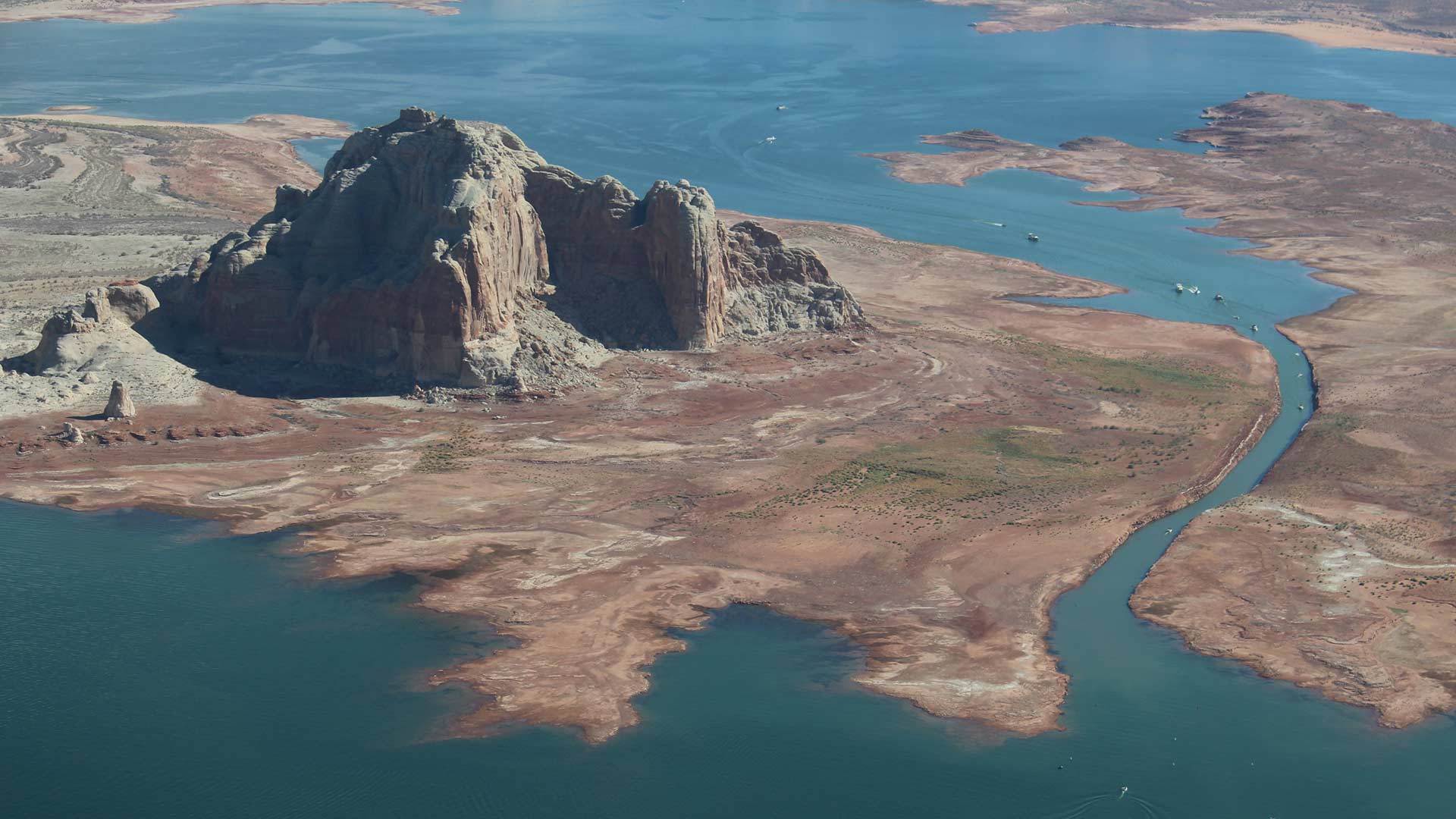 Lake Powell on the Utah-Arizona border continues to drop as snowpack declines throughout the southwestern U.S. The narrow passageway shown here in September 2018 has been rendered unusable as water levels drop.
Lake Powell on the Utah-Arizona border continues to drop as snowpack declines throughout the southwestern U.S. The narrow passageway shown here in September 2018 has been rendered unusable as water levels drop.
ALBUQUERQUE, N.M. — Drought conditions in much of the southwestern United States have improved because of surges of moisture over the last few months. But national forecasters and climate experts warned Thursday that it hasn't been enough to alleviate concerns about long-term water supplies around the region.
Officials with the National Oceanic and Atmospheric Administration's Climate Prediction Center and others provided a briefing on the current conditions in Arizona, Colorado, New Mexico and Utah as parts of California and the Pacific Northwest were blasted by another round of snow and rain.
The situation further inland has been less extreme, but the extra precipitation in southwestern Arizona has spurred some concerns that the upcoming harvest season could be interrupted.
Overall, maps depicting drought and precipitation over the last four months indicate a turn-around for a region that has been grappling with dry conditions for the better part of four years, Arizona state climatologist Nancy Selover said.
She explained that while her state is greening up in the lower elevations and Colorado and Utah are enjoying near average or better snowpack, parts of New Mexico have yet to recover. The already arid state is currently home to the two driest spots in the nation, according to the latest U.S. Drought Monitor .
In areas like this and southwestern Colorado, where soil moisture levels already are so low, the experts said spring runoff will be soaked up by the ground before being able to boost stream and river flows and replenish reservoirs. That can be further exacerbated when snow turns into vapor and is lost to the atmosphere before ever having a chance to melt.
"Snowpack is not a guarantee of what your available water supplies will be," said Becky Bolinger with the Colorado Climate Center.
Many reservoirs in the four states are starting off the year low. Those along the highly managed Colorado River are still sending irrigation water to California, but capacity has dwindled elsewhere.
Federal data show the Salt River system in Arizona is at about 50 percent capacity, while the largest reservoir in New Mexico has dipped into the single digits. Officials said Elephant Butte Reservoir, which stores water along the Rio Grande for use in southern New Mexico, Texas and Mexico, is at 7 percent of its capacity.
Water restrictions still remain in place in northwestern New Mexico's San Juan County. Dust from White Sands National Monument in the south is being carried by the wind to Texas, more than 200 miles away.
Forecasters say there is more rain and snow in the forecast for the region over the next several days.

By submitting your comments, you hereby give AZPM the right to post your comments and potentially use them in any other form of media operated by this institution.